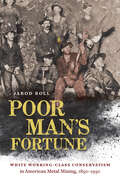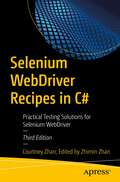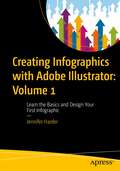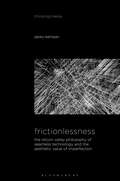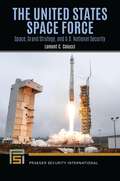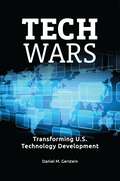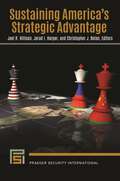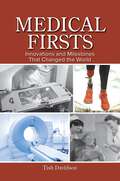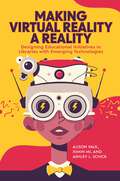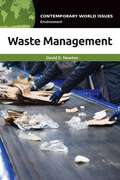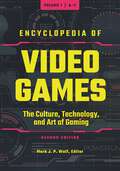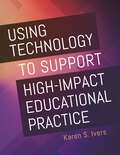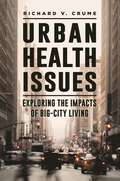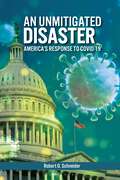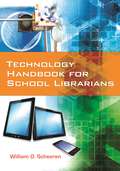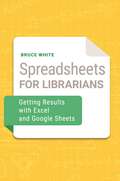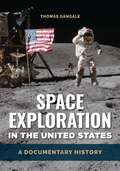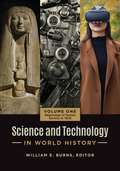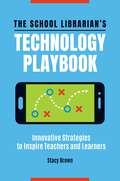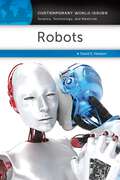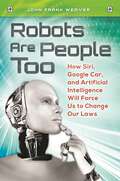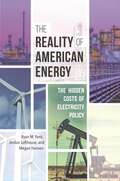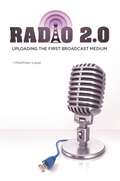- Table View
- List View
Poor Man's Fortune: White Working-Class Conservatism in American Metal Mining, 1850–1950
by Jarod RollWhite working-class conservatives have played a decisive role in American history, particularly in their opposition to social justice movements, radical critiques of capitalism, and government help for the poor and sick. While this pattern is largely seen as a post-1960s development, Poor Man's Fortune tells a different story, excavating the long history of white working-class conservatism in the century from the Civil War to World War II. With a close study of metal miners in the Tri-State district of Kansas, Missouri, and Oklahoma, Jarod Roll reveals why successive generations of white, native-born men willingly and repeatedly opposed labor unions and government-led health and safety reforms, even during the New Deal. With painstaking research, Roll shows how the miners' choices reflected a deep-seated, durable belief that hard-working American white men could prosper under capitalism, and exposes the grim costs of this view for these men and their communities, for organized labor, and for political movements seeking a more just and secure society. Roll's story shows how American inequalities are in part the result of a white working-class conservative tradition driven by grassroots assertions of racial, gendered, and national privilege.
Selenium WebDriver Recipes in C#: Practical Testing Solutions for Selenium WebDriver
by Courtney ZhanSolve your Selenium WebDriver problems with this quick guide to automated testing of web applications with Selenium WebDriver in C#. This third edition contains hundreds of solutions to real-world problems, with clear explanations and ready-to-run Selenium test scripts that you can use in your own projects. Updated to Selenium version 4, this revision includes Visual Studio Code set up, additional recipes, and new chapters on Selenium DevTools and continuous testing. You'll see how to use Selenium WebDriver for select lists, navigation, assertions, frames, file upload and pop-up dialogs. You'll also learn how to locate web elements and test functions for hyperlinks, buttons, TextFields and TextAreas, radio buttons, CheckBoxes, and more. What You'll Learn Debug test scripts and test data Work with Selenium Remote Control Server Manage and deal with browser profiles and capabilities Monitor tests for advanced user interactions and experiences (UX) Who This Book Is For Experienced .NET and C# Windows application programmers/developers.
Creating Infographics with Adobe Illustrator: Learn the Basics and Design Your First Infographic
by Jennifer HarderThis full-color book will teach you how to use Adobe Illustrator's various tools to create infographics, as well as basic page layouts for them. This is the first of three volumes which will cover all the fundamentals of Illustrator, an industry standard application used by graphic designers and marketing and communication teams. How is an infographic different from a logo or any other illustration? What additional thought processes, skills, or software tools should be utilized to create an infographic? In this first volume of Illustrator Basics, you will learn the answers to all these questions. Author Jennifer Harder will walk you through creating basic infographics in Illustrator using Basic Shape tools, Pen Tools, Type Tools, and Symbols. Upon completing this volume, you will have an appreciation for how easy it is to design an infographic and discover how rudimentary shapes and colors can affect readability while conveying meaning to your audience. You will be able to use this knowledge to create your own infographics using Illustrator’s wide array of tools. Who This Book Is For Discover the tools within Illustrator that are ideal for creating basic infographicsDevelop a logo based upon a scanned sketchGain an understanding of different infographic layouts and the process of reviewing them with your client Who This Book Is For Beginner-level designers and others who are interested in learning the process of creating infographics for their company, the classroom, for a visual resume, an article in a magazine, or a webpage.
Frictionlessness: The Silicon Valley Philosophy of Seamless Technology and the Aesthetic Value of Imperfection (Thinking Media)
by Jakko KemperFrictionlessness provides an examination of the environmentally destructive digital design philosophy of "frictionlessness" and the critical significance of a technological aesthetic of imperfection.If there is one thing that defines digital consumer technologies today, it is that they are designed to feel frictionless. From smart technologies to cloud computing, from from one-click shopping to the promise of seamless streaming-digital technology is framed to host ever-faster operations while receding increasingly into the background of perception. The environmental costs of this fetishization of frictionlessness are enormous and unevenly distributed; the frictionless experience of the end user tends to be supported by opaque networks of exploited labor and extracted resources that disproportionately impact the Global South. This situation marks an urgent need for alternate, less destructive aesthetic relations to technology. As such, this book examines imperfection, as an aesthetic concept that highlights existential conditions of finitude and fragility, as a particularly powerful counterweight to the dominant digital design philosophy of frictionlessness.While frictionlessness aims to draw the user's perception away from the exploitative and destructive conditions of digital production, imperfection forms an aesthetic source of friction that alerts users to the fragile nature of technology and the finite resources on which it relies. These arguments are elaborated through a close reading of three technological objects-a video game that was programmed to expire, an audiovisual performance that laments the fate of disused technology and a collection of music albums that dramatize a techno-cultural logic of relentless consumerism. Together, these case studies underline the value of technological aesthetics of imperfection and point to the need for a renewed ethics of care in relation to technology.
Frictionlessness: The Silicon Valley Philosophy of Seamless Technology and the Aesthetic Value of Imperfection (Thinking Media)
by Jakko KemperFrictionlessness provides an examination of the environmentally destructive digital design philosophy of "frictionlessness" and the critical significance of a technological aesthetic of imperfection.If there is one thing that defines digital consumer technologies today, it is that they are designed to feel frictionless. From smart technologies to cloud computing, from from one-click shopping to the promise of seamless streaming-digital technology is framed to host ever-faster operations while receding increasingly into the background of perception. The environmental costs of this fetishization of frictionlessness are enormous and unevenly distributed; the frictionless experience of the end user tends to be supported by opaque networks of exploited labor and extracted resources that disproportionately impact the Global South. This situation marks an urgent need for alternate, less destructive aesthetic relations to technology. As such, this book examines imperfection, as an aesthetic concept that highlights existential conditions of finitude and fragility, as a particularly powerful counterweight to the dominant digital design philosophy of frictionlessness.While frictionlessness aims to draw the user's perception away from the exploitative and destructive conditions of digital production, imperfection forms an aesthetic source of friction that alerts users to the fragile nature of technology and the finite resources on which it relies. These arguments are elaborated through a close reading of three technological objects-a video game that was programmed to expire, an audiovisual performance that laments the fate of disused technology and a collection of music albums that dramatize a techno-cultural logic of relentless consumerism. Together, these case studies underline the value of technological aesthetics of imperfection and point to the need for a renewed ethics of care in relation to technology.
The United States Space Force: Space, Grand Strategy, and U.S. National Security (Praeger Security International)
by Lamont C. ColucciThe United States Space Force, the sixth branch of the armed forces, will soon play a leading role in American foreign policy and will be necessary to protect its economic, political, and social interests at home and abroad.This book argues that America's newest branch of the armed forces, the United States Space Force, will soon play a key strategic role in American foreign policy, military and economic expansion, and technological innovation. Written by a leading expert on and member of the Space Force, the book offers an introduction to the Space Force, explains the urgent need for it, and walks readers through what exactly the Space Force is and is not. Drawing on dozens of interviews with high-ranking members of the armed forces, the author claims that, in the future, space will be the geopolitical center of world politics, as such countries as the U.S., Russia, and China jockey for control of it. America must therefore set aside partisan politics to make space a top priority, as a failure to do so will leave the U.S. and its citizens in a dangerous and vulnerable position on the world stage.
Tech Wars: Transforming U.S. Technology Development
by Daniel M. GersteinThis book explores the evolution of the current U.S. research and development enterprise, asks whether this organization remains appropriate to the challenges we face today, and proposes strategies for better preparing for the global technology race shaping our future.Across the globe, nation states and societies, as well as corporations, technology developers, and even individuals, find themselves on the front lines of a global technology race. As we approach the third decade of this century, the outlines of the contest have become clear. Spending on research and development, such new methods as innovation centers, and inclusion of powerful technologies into governments and society are occurring at a rapid pace. Technology winners and losers are emerging.How did we arrive at this global technology fight? How and where will it be waged? What can we do to prepare for the future? In 10 chapters, Tech Wars addresses these questions and more, examining the conditions that have led us to this point and introducing new strategies, organizational changes, and resource allocations that will help the United States respond to the challenges that are on the horizon.
Sustaining America's Strategic Advantage (Praeger Security International)
by Joel R. Hillison, Jerad I. Harper, and Christopher J. Bolan, EditorsWritten for foreign policy practitioners, scholars, and students, this book offers critical insights into the modern landscape of international politics and warfare and explains how the United States can sustain its strategic advantages in the 21st century and beyond.From the level of grand strategy to more intricate security issues, this book explores how the United States can sustain its strategic military and political advantages around the world. Developing and implementing effective national policies; fostering strong diplomatic and geopolitical ties with allies in Europe, the Indo-Pacific, and the Middle East; and managing an effective defense enterprise are key, according to the authors, to competing on a shifting international security landscape. Advancing the literature on grand strategy and outlining emerging critical issues in security, this book offers an overarching framework for strategy; an analysis of crucial security-related topics, such as cyber warfare; and informed opinions on components of competitive success, such as irregular warfare and partner building. Written by well-respected scholars, security professionals, and foreign policy practitioners, this book goes beyond focusing on hard power to consider how the U.S. can leverage its education institutions and a worldwide network of allies and partners to sustain its strategic advantage now and in the future.
Medical Firsts: Innovations and Milestones That Changed the World
by Tish DavidsonProfiling 60 medical innovations and milestones from the 11th through 21st centuries, this book highlights the people and stories behind these key moments while also exploring their historical context and enduring legacy.Medical Firsts: Innovations and Milestones That Changed the World brings together a carefully curated collection of turning points in the history of medicine over the last millennium. These firsts are drawn from a wide array of medical fields, from surgery to genetics, dentistry, and psychiatry. Firsts are arranged chronologically, but a thematic listing has also been included to allow readers to focus in on particular subject areas, such as trailblazing individuals, groundbreaking drugs and treatments, pioneering diagnostic tools, and life-saving medical procedures. Each entry begins with a description of how the first came to be, followed by discussion of the historical context in which it emerged and its continued impact on the world of medicine. Sources for further information are provided at the end of each entry and serve as a gateway to further study.We take many modern medical devices and techniques for granted, but everything from hypodermic needles and baby incubators to organ transplants, antibiotics, and hearing aids began simply as ideas in someone's mind. And while such concepts as formal medical education, methodical clinical trials, and universal healthcare may seem commonplace today, this wasn't always the case. In some cases, milestones centered around key people and institutions rather than technologies or ideas. Do you know who the first woman to win the Nobel Prize in Physiology or Medicine was, or where the oldest medical school still in existence resides? Medical history comes to life in this captivating volume.
Making Virtual Reality a Reality: Designing Educational Initiatives in Libraries with Emerging Technologies
by Alison Valk Ximin Mi Ashley L. SchickWalks readers through the key components of developing library-led research and programming that leverages emerging technologies with the goal of engaging students and faculty.As educational curricula and research evolve to include advanced technologies, libraries must offer programming with these emerging technologies in mind, including the use of virtual reality (VR) and augmented reality (AR). In this timely guide, Valk, Mi, and Schick present readers with tools for assessing their level of organizational readiness to begin such programs and, more importantly, how to sustain them with limited budgets, expertise, and resources.Building on their own experiences, the authors teach readers how to develop technology-rich classes, assess student projects, and overcome technical hurdles. They spotlight this kind of programming as integral to building strategic partnerships in an educational environment. Readers will learn how to adapt and design programs or initiatives in which the necessary technologies are rapidly changing, not only in higher education institutions, but also in schools. Worksheets and resources assist readers in reflecting on their own work and developing educational programming to suit their organizational needs.
Waste Management: A Reference Handbook (Contemporary World Issues)
by David E. NewtonWaste Management: A Reference Handbook provides an in-depth look at the waste management industry in the United States and elsewhere, including such issues as food scraps, recycling, and other kinds of solid waste.Waste Management: A Reference Handbook covers the topic of waste management from the earliest pages of human history to the present day.Chapters One and Two provide a historical background of the topic and a review of current problems, controversies, and solutions. The remainder of the book consists of chapters that aid readers in continuing their research on the topic, such as an extended annotated bibliography, a chronology, a glossary, lists of noteworthy individuals and organizations in the field, and important data and documents.The variety of resources provided, such as further reading, perspective essays about waste management, a historical timeline, and useful terms in the industry, differentiates this book from others in the field. It is intended for readers of high school through the community college level, along with adult readers who may be interested in the topic.
Encyclopedia of Video Games [3 volumes]: The Culture, Technology, and Art of Gaming [3 volumes]
by Mark J. P. WolfNow in its second edition, the Encyclopedia of Video Games: The Culture, Technology, and Art of Gaming is the definitive, go-to resource for anyone interested in the diverse and expanding video game industry.This three-volume encyclopedia covers all things video games, including the games themselves, the companies that make them, and the people who play them. Written by scholars who are exceptionally knowledgeable in the field of video game studies, it notes genres, institutions, important concepts, theoretical concerns, and more and is the most comprehensive encyclopedia of video games of its kind, covering video games throughout all periods of their existence and geographically around the world.This is the second edition of Encyclopedia of Video Games: The Culture, Technology, and Art of Gaming, originally published in 2012. All of the entries have been revised to accommodate changes in the industry, and an additional volume has been added to address the recent developments, advances, and changes that have occurred in this ever-evolving field. This set is a vital resource for scholars and video game aficionados alike.
Using Technology to Support High-Impact Educational Practice
by Karen S. IversEmphasizing the importance of preparing students for the global workforce, this title explains how to teach using the latest educational technology.As technology becomes more advanced and accessible, it gives rise to new delivery methods of instruction and learning. High Impact Educational Practices including collaboration, diversity, global learning, service- and project-based learning, and research and writing, can be used to strengthen students' readiness for the demands of the 21st-century global community and workforce.This book helps current and future K–12 educators to better understand high impact educational practices and why they are important. It provides educators with ideas of how to use technology to support high impact educational practices in their classrooms and helps them to create just, equitable, and inclusive learning environments that support 21st-century learning.
Urban Health Issues: Exploring the Impacts of Big-City Living
by Richard V. CrumeLiving in an urban environment can have a major influence—both positive and negative—on one's physical health and mental well-being. This book examines more than 20 key issues related to city living and what's being done to address them.According to recent statistics, 80.7 percent of Americans live in urban areas, and more than half of the world's population lives in cities. From various types of pollution to crime to overcrowding, the urban environment can have massive impacts on our physical, psychological, and social health and well-being. Moreover, while certain aspects of living in a city, such as access to health care, can improve the lives of many, other factors can have detrimental effects and can lead to inequalities along racial and socioeconomic lines.Urban Health Issues: Exploring the Impacts of Big-City Living examines 23 key issues related to urban health, exploring their causes and consequences in depth and highlighting what cities and individuals can do to safeguard the well-being of urban residents. It also draws comparisons between cities in the United States and the industrialized world and those in poor and developing nations, providing important global insights. The material is brought to life by fascinating city case studies and illuminating interviews with experts working in a variety of fields.
An Unmitigated Disaster: America's Response to COVID-19
by Robert O. SchneiderHighlighting American cultural and political contexts, this book provides an in-depth assessment of the breadth and magnitude of the United States' errors in its response to the COVID-19 pandemic.An Unmitigated Disaster chronicles and explains the U.S. response to the COVID-19 pandemic. Emergency management expert Robert O. Schneider considers the quality of U.S. pandemic planning and preparedness; the quality and effectiveness of national, state, and local response efforts; and the performance of national leaders during this historic public health crisis. The book culminates in an assessment of how a predictable public health threat became an unprecedented health, economic, and security disaster. Schneider convincingly shows that conscious decisions were made by governmental authorities, beginning with the president, to ignore expert information and security intelligence in pursuit of other objectives. In other words, Schneider argues, if the U.S. was ill-prepared for or slow to respond to the crisis, it was because its leaders consciously chose to be ill-prepared or slow to respond. Readers will be fascinated by this behind-the-scenes exposé of a pandemic year.
Toxic Chemicals in America [2 volumes]: Controversies in Human and Environmental Health [2 volumes]
by Kelly A. TzoumisThis one-stop resource is ideal for understanding the extent to which toxic chemicals are used in U.S. industry and agriculture—impacting public health and the environment through everything from industrial solvents to children's toys.Every year, about 4 billion pounds of toxic chemicals are generated and released by U.S. industries. Do these chemicals pose a potential health threat to American families, including vulnerable groups like children and the elderly? Is their manufacture and use adequately regulated to protect both human and environmental health? Is the Chemical Safety for the 21st Century Act, signed in June 2016 by President Barack Obama with bipartisan support, truly the first major overhaul of toxic chemical regulation in 40 years to put human health first, as its supporters asserted? Or is it a fatally flawed bill that does the bidding of industry by undermining strong state environmental and public health laws, as some detractors claim?This two-volume set addresses all of those questions. Moreover, it presents and examines arguments marshaled by business interests, community leaders, scientists, activists, and lawmakers alike. It thus provides users with the information they need to accurately assess the impacts—pro and con—that industrial chemicals are having in shaping the world in which we work, eat, drink, breathe, and play.
Technology Handbook for School Librarians
by William O. ScheerenStay current, meet educational standards, and keep your students coming back again and again by incorporating the latest technologies into your school library.Both theoretical and practical, this book will provide you with a strong introduction to a variety of technologies that will serve you—and your patrons—well. Each chapter addresses a different aspect or kind of technology. You'll learn essential skills, planning and funding techniques, and what hardware and software you'll need. You'll find plenty of information on creating or maintaining your library's web presence through websites, blogs, and social networking, as well as on various tools that you can use and apply to your curriculum.Many state standards include technology components, and this guide shows you how to meet them and stay up to date. You'll also learn what you should watch for in the future so you remain essential to your school.
Spreadsheets for Librarians: Getting Results with Excel and Google Sheets
by Bruce WhiteWork smarter and save time with the librarian's guide to the hidden-in-plain-sight secrets of Excel, Sheets, and other types of spreadsheets.While some librarians have become very skilled at using the full power of Excel and Sheets to turn data into useful and valuable information, for many librarians the relevance of spreadsheets—and how to use them—is not necessarily obvious.This book demystifies Excel and other spreadsheets. Starting from basic concepts, the book progresses to advanced implementations important to librarians in such areas as collection management, including evaluation and benchmarking; research assessment through the creation of sophisticated bibliometric measures; and library design based on an analysis of patron behavior or the creation of a keyword map of physical collections. Real-life examples highlight a variety of techniques and shortcuts that can be immediately applied to libraries of all kinds.Spreadsheets for Librarians is a book for the desk, not only the library shelves. No prior knowledge of spreadsheets is needed, and readers can expect to learn skills that will enhance their reputation as information and data professionals.
Space Exploration in the United States: A Documentary History
by Thomas GangaleThis select volume of historical documents is organized chronologically, spanning from 1914 to the present. Divided into eight chapters, it includes a narrative introduction to each historical period.This collection of historical documents provides insight into the history of the United States in its pursuit of the peaceful uses of outer space, with emphasis on the manned space program of the National Aeronautics and Space Administration, as well as commercial American activities supporting human spaceflight in the early 21st century. Rocketry and space technology have served varied goals throughout the Space Age: pure research, as well as research applied for national security, national prestige, and commercial profit. There have been varied actors as well, among them individuals supported by philanthropists as well as governments, intergovernmental organizations, international consortiums, and for-profit corporations. This book focuses on space exploration, and in particular, human space exploration, leading to the questions, "Why have humans gone into outer space in the past?" and "Why will they do so in the future?" These documents help readers to examine the variety of fascinating answers to those questions.
Science and Technology in World History [2 volumes]: [2 volumes]
by William E. BurnsThis encyclopedia offers an interdisciplinary approach to studying science and technology within the context of world history. With balanced coverage, a logical organization, and in-depth entries, readers of all inclinations will find useful and interesting information in its contents.Science and Technology in World History takes a truly global approach to the subjects of science and technology and spans the entirety of recorded human history. Topical articles and entries on the subjects are arranged under thematic categories, which are divided further into chronological periods. This format, along with the encyclopedia's integrative approach, offers an array of perspectives that collectively contribute to the understanding of numerous fields across the world and over eras of development. Entries cover discussions of scientific and technological innovations and theories, historical vignettes, and important texts and individuals throughout the world. From the discovery of fire and the innovation of agricultural methods in China to the establishment of surgical practices in France and the invention of Quantum Theory, this encyclopedia offers comprehensive coverage of fascinating topics in science and technology through a straightforward, historical lens.
The School Librarian's Technology Playbook: Innovative Strategies to Inspire Teachers and Learners
by Stacy BrownUsing concrete examples, The School Librarian's Technology Playbook offers strategies for school librarians to initiate and support innovative practices throughout their school community.The role of school librarians has evolved: no longer do they primarily support teachers with reading and literacy resources. Many librarians now support teachers in integrating technology tools and innovative teaching practices in their classrooms.At her school, author and learning coordinator Stacy Brown has pioneered the transition to innovation and technology use in the classroom. In The School Librarian's Technology Playbook, she showcases different technology tools and innovative strategies that can be incorporated into the classroom, such as 3D printing, augmented reality, green screen applications, gamification, coding, makerEd, and more. She details the many ways in which school librarians can support teachers as they implement these new practices into their curriculum. School librarians will learn how to collaborate with teachers and how to empower them to step outside of their comfort zones to try new tools and teaching methods. Readers of this book will also learn how to support teachers as the technology continues to change in this dynamic educational landscape.
Robots: A Reference Handbook (Contemporary World Issues)
by David E. NewtonRobots: A Reference Handbook differs from most other books on robotics in the variety of resources that it provides to readers of all ages.Robots: A Reference Handbook teaches readers about a wide variety of robots. It opens with a history of robotics, dating to ancient Greece and Rome, at which time an impressive array of automata were invented for entertainment, religious, and instructional purposes. It follows the development of automata and robots in ancient China and the Islamic world, through to Western Civilization in the present day. Subsequent chapters describe the wide array of applications to which robots are put today and discuss the technical, social, political, ethical, and economic issues created by their increasing use. Additionally, a number of essays by interested individuals highlight various aspects of robotics development. The remaining chapters of the book provide resources that will assist readers in learning more about the topic of robotics.
Robots Are People Too: How Siri, Google Car, and Artificial Intelligence Will Force Us to Change Our Laws
by John Frank WeaverThe only book of its kind to look at how our legal system needs to change to accommodate a world in which machines, in addition to people, make decisions.For years, robots were solely a matter of science fiction. Today, artificial intelligence technologies serve to accelerate our already fast-paced lives even further. From Apple's Siri to the Google Car to GPS, machines and technologies that make decisions and take action without direct human supervision have become commonplace in our daily lives. As a result, laws must be amended to protect companies that produce robots and the people that buy and use them. This book provides an extensive examination of how numerous legal areas—including liability, traffic, zoning, and international and constitutional law—must adapt to the widespread use of artificial intelligence in nearly every area of our society. The author scrutinizes the laws governing such fields as transportation, medicine, law enforcement, childcare, and real estate development.
The Reality of American Energy: The Hidden Costs of Electricity Policy
by Ryan M. Yonk Jordan Lofthouse Megan HansenThis book dispels common myths about electricity and electricity policy and reveals how government policies manipulate energy markets, create hidden costs, and may inflict a net harm on the American people and the environment.Climate change, energy generation and use, and environmental degradation are among the most salient—and controversial—political issues today. Our country's energy future will be determined by the policymakers who enact laws that favor certain kinds of energy production while discouraging others as much as by the energy-production companies or the scientists working to reduce the environmental impact of all energy production. The Reality of American Energy: The Hidden Costs of Electricity provides rare insights into the politics and economics surrounding electricity in the United States. It identifies the economic, physical, and environmental implications of distorting energy markets to limit the use of fossil fuels while increasing renewable energy production and explains how these unseen effects of favoring renewable energy may be counterproductive to the economic interests of American citizens and to the protection of the environment.The first two chapters of the book introduce the subject of electricity policy in the United States and to enable readers to understand why policymakers do what they do. The remainder of the book examines the realities of the major electricity sources in the United States: coal, natural gas, nuclear, hydrodynamic, wind, biomass, solar, and geothermal. Each of these types of energy sources is analyzed in a dedicated chapter that explains how the electricity source works and identifies how politics and public policy shape the economic and environmental impacts associated with them.
Radio 2.0: Uploading the First Broadcast Medium
by Matthew LasarWelcome to the uncertain world of "Radio 2.0"—where podcasts, mobile streaming, and huge music databases are the new reality, as are tweeting deejays and Apple's Siri serving as music announcer—and understand the exciting status this medium has, and will continue to have, in our digitally inclined society.How did popular radio in past decades—from President Franklin D. Roosevelt's "Fireside Chats" in the 1930s through Top 40 music and Rush Limbaugh's talk radio empire—shape American society? How did devices and systems like the iPhone, Pandora, and YouTube turn the radio industry upside-down? Does radio still have a future, and if so, what will we want it to look like?Radio 2.0: Uploading the First Broadcast Medium covers the history and evolution of Internet radio, explaining what came before, where Internet radio came from, and where it is likely headed. It also gives readers a frame of reference by describing radio from its introduction to American audiences in the 1920s—a medium that brought people together through a common experience of the same broadcast—and shows how technologies like digital music and streaming music services put into question the very definition of "radio." By examining new radio and media technologies, the book explores an important societal trend: the shift of media toward individualized or personalized forms of consumption.
